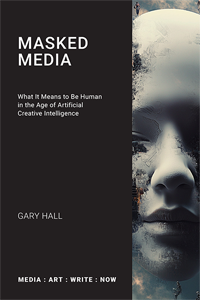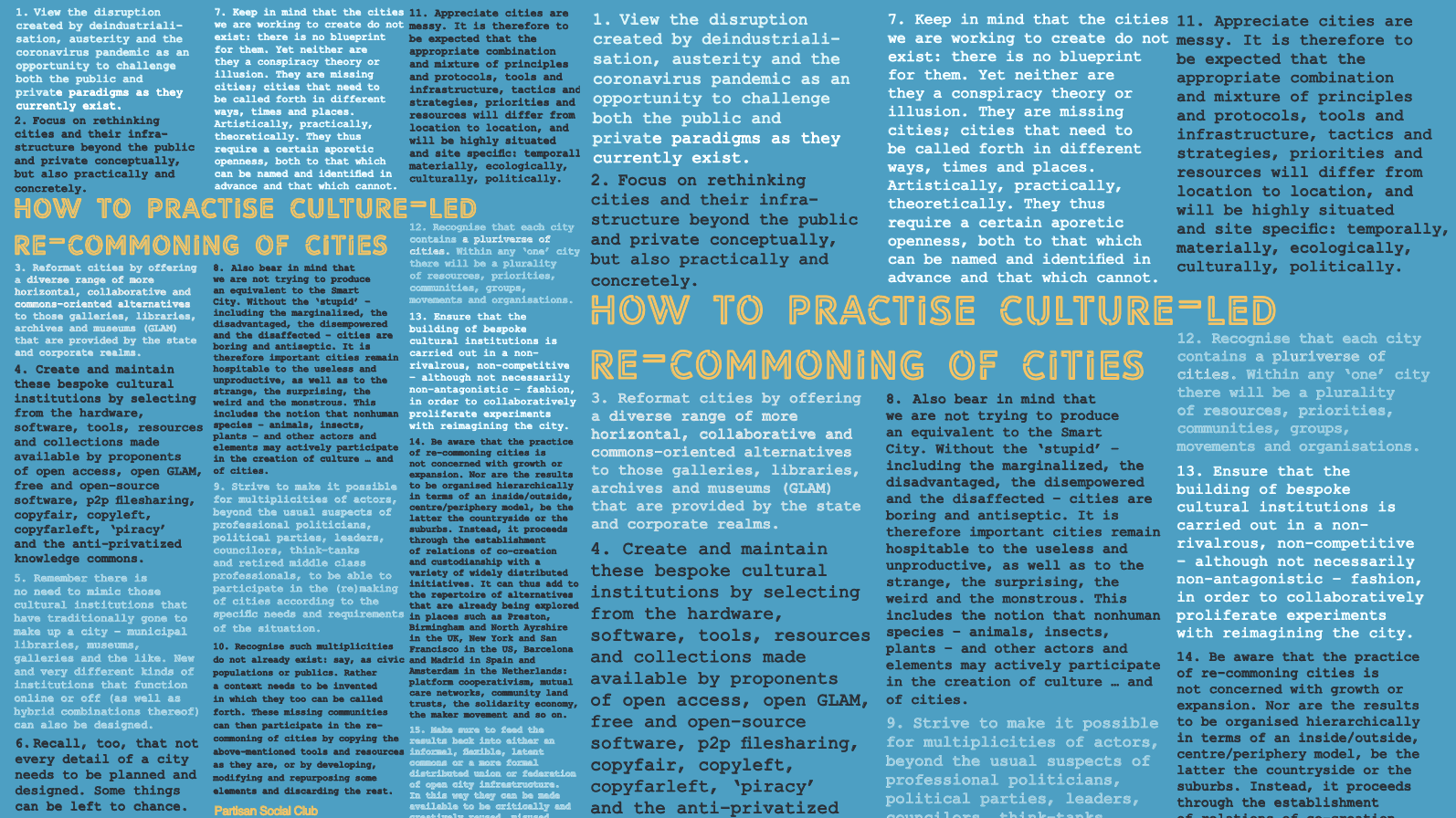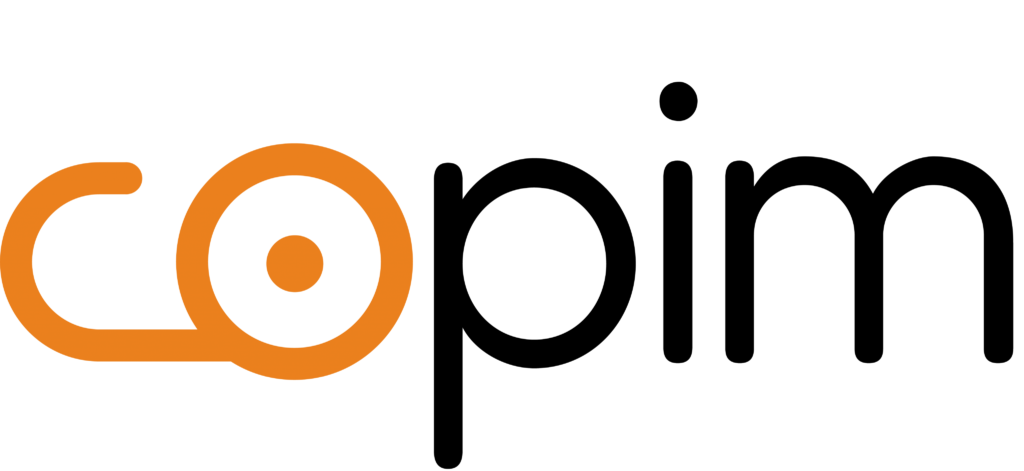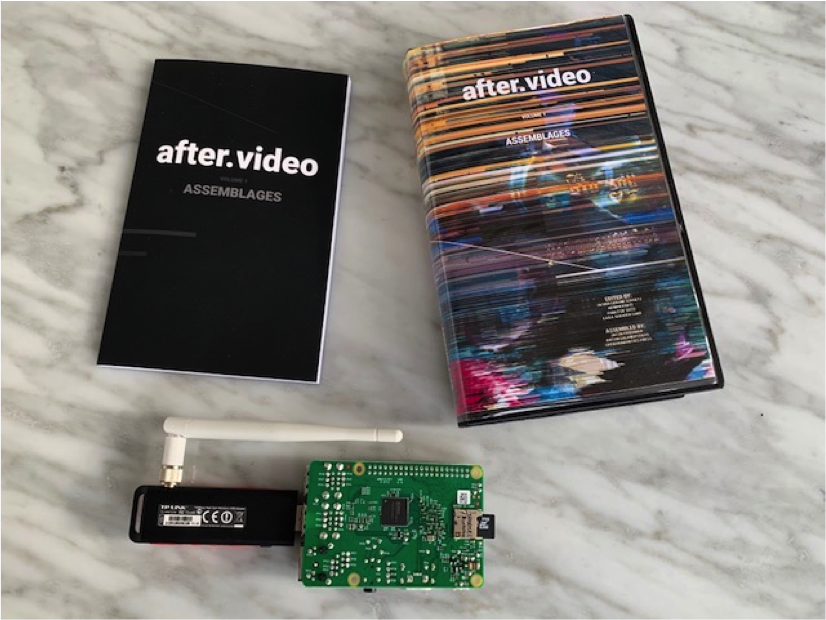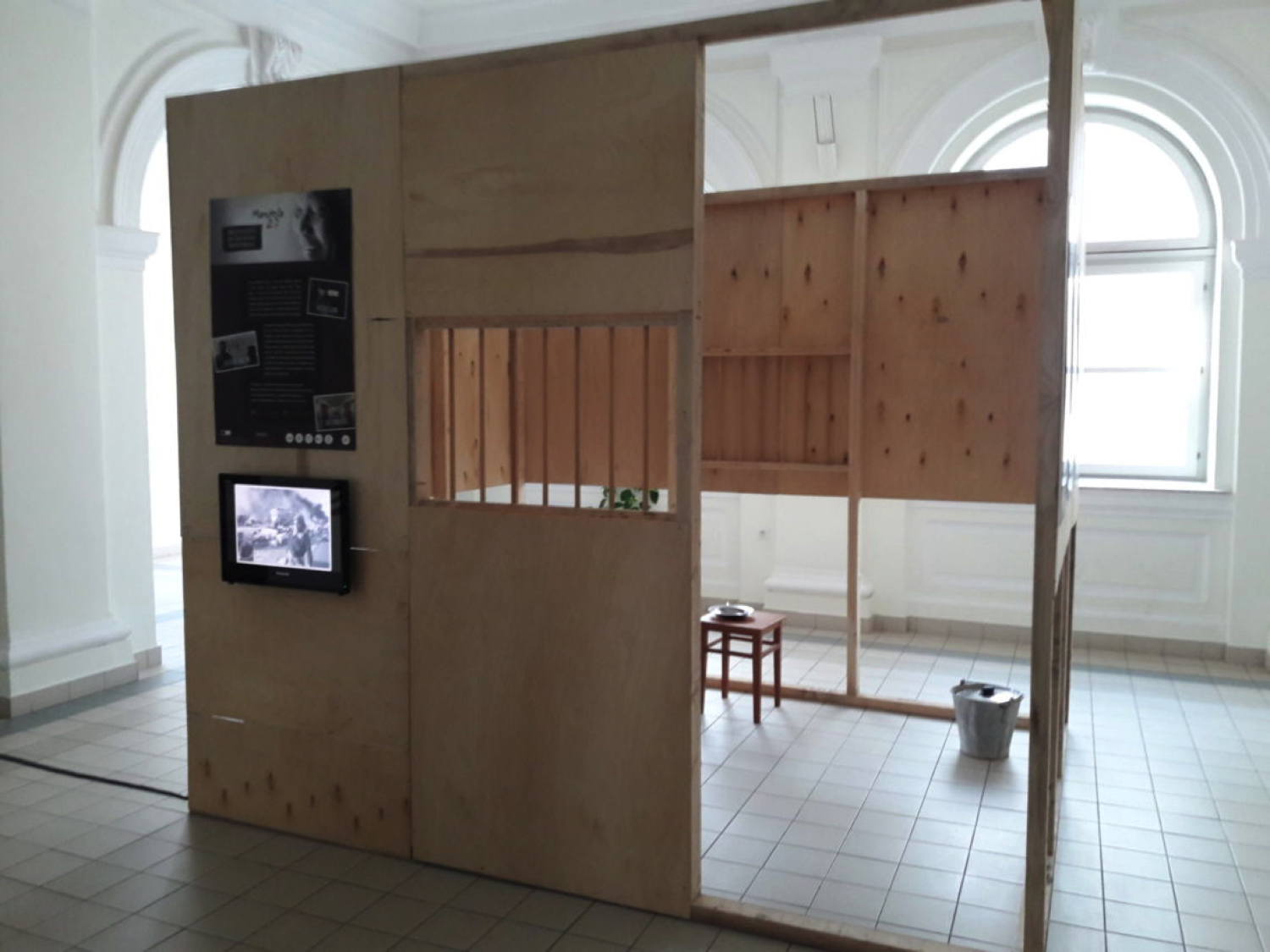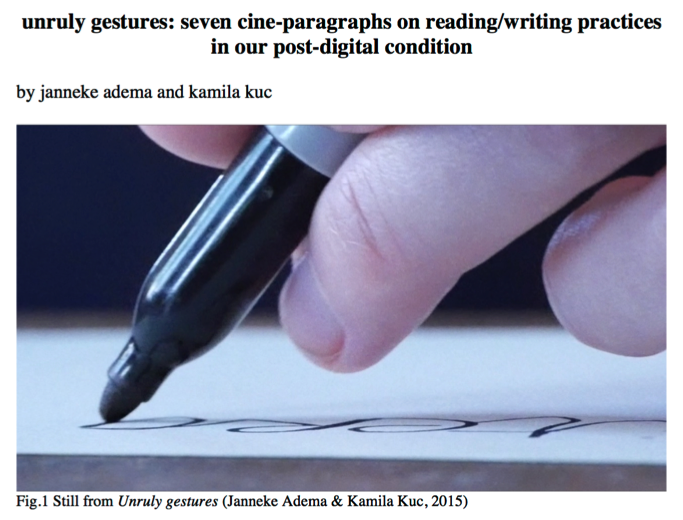How to Be An Anti-Bourgeois Theorist: Postdigital Politics in a Time of Pandemics IV
 Tuesday, May 12, 2020 at 10:32AM
Tuesday, May 12, 2020 at 10:32AM In part III of Postdigital Politics in a Time of Pandemics, I looked at some of the ways those of us who are on the left can employ communication technologies for purposes grounded in principles of social responsibility, solidarity and mutual care. In doing so I raised the question: might exploring new modes of authorship, ownership and reproduction have the potential to lead to ways of being and doing that are more consistent with the kind of progressive politics many of us advocate, but don't necessarily perform ourselves? To show that this might indeed be the case I included in my examples some of the bottom-up projects for the production and sharing of free resources, infrastructure and knowledge that my collaborators and I have been involved with over the years.
Hopefully, the activities I have described go some way toward explaining how and why my collaborators and I are trying to operate differently to the individualistic, liberal humanist ways of working and acting traditionally associated with being a theorist in the fields of art and culture, especially of the ‘star’ variety. There are a number of further dimensions to this mode of practicing commons-oriented, anti-liberal, anti-neoliberal, anti-bourgeois theory (ABT) we’re experimenting with. I won’t have space to go into any of the related projects in depth. Besides, engaging with these ventures in their contextual site-specificity is actually the most interesting way to understand and experience them. But I would like to quickly sketch a few, albeit more in the spirit of an artist’s talk than a full-blown philosophical argument.
ABT Is Post-literary
In the era of YouTube, Instagram and Zoom, ‘Gutenbergian’ media technologies such as the written and printed text are no longer the natural or normative means by which knowledge is necessarily generated and research communicated. Accordingly, while my collaborators and I still publish conventional print books and journal articles, our theory might not necessarily take the form of a piece of writing at all. We are increasingly involved in opening knowledge and research up to being not just postdigital, but post-grammatological or post-literary too.
We’re doing this by creating, publishing and sharing work in the form of films, videos and virtual, augmented and immersive media environments. Take Oliver Lerone Schultz et al.’s collectively produced after.video. Published by OHP in 2016, this is a collection of annotated digital video essays that explore the future for theory after both books and video. It does so in two different instantiations: a freely available online version; and an offline version produced as a distinct physical object in its own right: namely, an assembly-on-demand video book stored on a Raspberry Pi computer and packaged in a VHS (Video Home System) case. after.video is therefore both an analogue and digital object manifested, in a scholarly gesture, as a ‘video book’.
after.video also points to another way in which my collaborators and I are endeavouring to open theory to being post-grammatological: this is through the reinvention of hardware, software and network infrastructures. Included in this reinvention are facilities concerned with the production and circulation of research on a radical open access basis: books and journals, for example, as with Open Humanities Press and COPIM. But we are involved in cultural/artistic projects that operate at a larger scale, too, such as museums, galleries and archives.
Let me provide an example of one such initiative that can be copied and reproduced relatively easily (unlike after.video perhaps, which requires a certain amount of technical know-how). Mandela27 is a website and digital platform created in 2014 by Jacqueline Cawston and her partners for the Robben Island Museum in South Africa. Included in the project is a hybrid physical/digital DIY Exhibition of the prison cell in which Mandela was held for the majority of his 27 years on the island. The exhibition consists of a few pieces of standard wood and plywood, arranged to form the exact dimensions of the space, together with a bucket, blanket, bench, plate and cup – the items the prisoners were allowed to have with them in their cells. The wood frame is also used to hold ten specially designed posters addressing topics such as colonialism and apartheid, along with a number of screens linked to the digital platform and its content. The latter features an interactive cultural map of Europe and South Africa, a 360-degree experience of the prison, images from the UWC Robben Island Museum Archives, video interviews with a former political prisoner and a prison guard, a crowd-sourced timeline and a digital game about life in Robben Island Prison. The original Mandela27 DIY Exhibition has toured South Africa, the U.K. and Europe and has been visited by over 170,000 people. However, Cawston and her colleagues also put together a kit containing details of how to construct the DIY Exhibition, and made it available on an open access basis, along with the contents of the digital platform and the ten posters. Because the physical materials are extremely low cost (all that’s needed really is some wood, a bucket and a blanket), this means any school or community can create their own pop-up version of the Mandela27 DIY Exhibition easily and cheaply – they don’t need to travel to a traditional bricks-and-mortar museum or art gallery to experience it.
What after.video and the Mandela27 DIY Exhibition both show is that, as far as we are concerned, postdigital culture does not necessarily come after the digital in any simple temporal sense. Open access and the postdigital are not just to be associated with online communication technologies and the ‘digital commons’, for instance. It’s important that they are understood as being potentially physical, offline and analogue – as well as hybrid combinations therefore – too.
ABT Is Low Key
Another dimension of our anti-bourgeois mode of theory is apparent from the way in which, although my collaborators and I may identify (or be identified) as radical theorists, we don’t always function as virtuoso individual authors. In a period when the self-organizing, leaderless mobilizations of the gilets jaunes (yellow vests) and Hong Kong protesters have experimented with new forms of subjectivity and social relations, isn’t the cult of the highly individualistic ‘rock star’ theorist or philosopher coming to an end? Even if it isn’t, shouldn’t it be – especially after Covid-19 has made a shared sense of social responsibility, solidarity and collaboration within a common struggle not so much a matter of political persuasion but of survival for many people? In keeping with this notion, we often refuse to occupy centre stage, preferring to operate in a more low-key, at times anonymous manner as part of collectives and communities of thinking and doing, such as the Radical Open Access Collective and WeMake. The latter is a makerspace fablab in Milan, with whom our fellow members of the Centre for Postdigital Cultures at Coventry, Valeria Graziano and Maddalena Fragnito, have been investigating the relationship between open technologies and healthcare.
ABT Builds, Develops, Maintains and Repairs
In fact, our activities as theorists frequently don’t involve authoring at all. Along with affective labour such as supporting, encouraging and inspiring, they can on occasion involve operating in the background to build, develop, maintain and repair more than actually author – as with the work of another collaborator as system administrator for the file-sharing shadow libraries Aaaaarg and UbuWeb. This is because we see theory not just as a means of imagining our ways of being in the world differently. It is a means of enacting them differently too. (Staying in the shadows can of course also serve as a ‘defence mechanism’ that enables a given project to ‘thrive and prevents its destruction’, as the design collective Kaspar Hauser write of these and other digital libraries such as Monoskop and Library Genesis.)
ABT Is Performative and Pre-figurative
Many of our projects are similarly performative, in the sense they’re concerned not only with representing the world, but also with intra-acting with it in order to make things happen. Some have referred to this kind of approach as hacking the situation or context. However, our theory-performances can also be understood in terms of the pre-figurative practices Graziano has written about: of ‘being the change we want to see’.
As I say, this often involves us in experimenting with the form of scholarly communications in the shape of books and journals, and also lectures, seminars, conferences, even the very gestures of reading and writing. When Clare Birchall, Joanna Zylinska and I wanted to explore the theory of books being liquid and living, for instance (rather than finished and frozen or dead), we didn’t just write about it. We actually made some liquid and living books that could be continually rewritten and republished: two series’ worth, in fact. Janneke Adema and I took a similar intra-active approach to editing ‘Disrupting the Humanities: Towards Posthumanities’, a 2016 issue of the Journal of Electronic Publishing (JEP). What we wanted to do there was take on, as theorists, some of the implications of the idea that a presentation isn’t simply a re-presentation of the written, text-on-paper argument delivered by the author. It’s rather a relational and processual meshwork of presenter, event organizers, facilitators and audience, along with the associated cultural practices, technologies, institutions, buildings, materials, tools, infrastructure and so on, all of which contribute to the presentation in its becoming. So we produced an edition of JEP consisting of a selection of video-presentations/articles cum theory-performances. Heavily annotated using the InterLace open source software program developed by Robert Ochshorn, these were designed to break down the divisions between the research and presentation, as well as between the ‘real time’ and online or ‘virtual’ audience.
Other projects we are engaged in concentrate on pre-figuratively reinventing the museum, gallery, archive, library or university in a postdigital context. Public Library: Memory of the World, for example, launched by Marcell Mars and Tomislav Medak in 2012, is an ‘artist-run’ online shadow or pirate library that currently contains more than 150,000 titles that it makes sure remain widely accessible without charge and without any other restrictions, including those associated with copyright law. It consists of a network of private libraries that, although independent and maintained locally by a community of ‘amateur librarians’, are connected with the project’s server through the ‘let’s share books’ software developed by Mars. The software allows people to search all the collections in Memory of the World, discover a title they want and import it directly to their own virtual library that, like the others, is organized using a version of the Calibre open source software for managing digital books.
ABT Is Concerned with Infrastructure
Memory of the World, the Mandela27 DIY Exhibition and COPIM are all also examples of our development of radically open and inclusive knowledge infrastructures in support of commoning. Infrastructure is particularly important to us in this respect because, as Leslie Chan shows, it concerns the power (otherwise hidden) to: set agendas and decisions – which are never neutral but embedded with ideological assumptions and biases; mobilize and accumulate resources; set standards and norms; set boundaries of participation; discriminate – or not, hopefully; and control what gets built, what’s possible.
Given the controversial and potentially transgressive nature of Memory of the World, it’s perhaps important to say a little more about why, as anti-bourgeois theorists, we’re interested in something like piracy (although Memory of the World can also be understood as a material enactment of the Guerrilla Open Access Manifesto attributed to internet hacktivist Aaron Swartz). Quite simply it’s because one thing even the left finds it hard to question these days is the idea of private property. Yet it’s private property that helps to construct and shape our subjectivities as both possessive individuals and members of the bourgeoisie. Piracy thus provides my collaborators and I with one starting point from which to develop an affirmative critique of private property and bourgeois subjectivity that is designed to help us be more consistent with the kind of radical politics many theorists espouse (but don’t necessarily perform themselves) when writing about the commons.
Having said that, Memory of the World, like a number of our other projects, does not, as Sollfrank points out, itself constitute a ‘commons in the strict sense of involving not only a non-market exchange of goods but also a community of commoners who negotiate the terms of use among themselves’ as equals in a voluntary, unforced, non-hierarchical fashion. That, in her words, ‘would require collective, formalized, and transparent types of organization’. It would also require governance, including the establishment of rules for resolving conflicts between individuals, the community and society at large, and the agreeing of sanctions for those commoners who do not comply. Moreover, most of the books that are made publicly accessible by Memory of the World are ‘privately owned and therefore cannot simply be transferred to become commons resources.’ As Sollfrank suggests, such projects are perhaps best understood instead as a ‘preliminary stage’ in which commoning is performed in an emergent, participative manner. They are moving us toward a horizon of ‘culture as a commons’, while at the same time providing us with the kind of ‘experimental zone needed to unlearn copyright and relearn new ways of cultural production and dissemination beyond the property regime.’
Certainly, one of the shared aims of our pre-figurative projects is to disarticulate the existing playing field and its manufactured common sense of what it means today to be a theorist, a philosopher, an academic, an artist or a political activist. They seek to foster instead a variety of antagonistic spaces both inside and outside of states and capital – spaces that contribute to the development of institutions and environments that are able to counter the hegemony of the traditional, liberal, public institutions such as the university on the one hand, and private, for-profit companies such as Elsevier, LinkedIn and Academia.edu on the other. This is the reason for our interest in the commons and commoning. Creating commons is one way we have chosen to describe our work producing, managing and maintaining such alternative, emergent spaces that are neither simply liberal nor neoliberal, public nor private. The fact of the matter is, ‘coming prior to adequate legislation, we currently lack even a vocabulary to talk about’ the commons in this sense, as the philosopher Roberto Esposito acknowledges. ‘It is something largely unknown, and even refractory, to our conceptual categories’. (And that includes communism, I would add.) Nevertheless, as Esposito insists, the struggle for an alternative ‘must start precisely by breaking the vise grip between public and private … by seeking instead to expand the space of the common’.
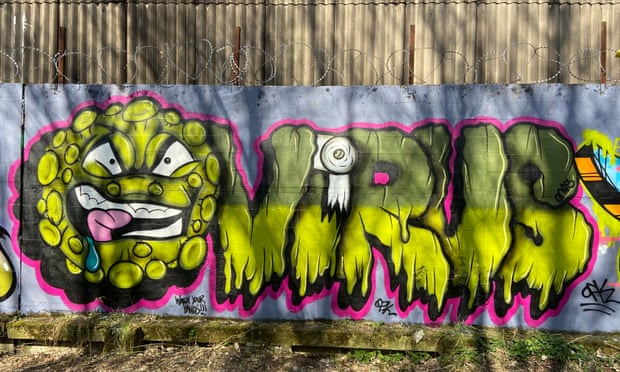
The coronavirus event, with the huge systemic shock and suspension of business as usual it has delivered, provides us with a significant strategic opportunity to do just this, if only we can take it. After all, Covid-19 has made it clear that, as the climate emergency develops and we continue to face health crises and other disasters, neither (globalist nor libertarian) neoliberalism nor an highly individualistic liberal humanism is going to be fit for purpose. Now more than ever it is important to experiment with ways of working, acting and thinking that are different to both. For us, this is precisely what an (symbolic/functional) entity such as the Centre for Postdigital Cultures, or indeed a university, is for. One of the purposes of a university is to create a space where society’s common sense ideas can be examined and interrogated, and to act as a testing ground for the development of new knowledges, new subjectivities, new practices and new social relations of the kind we are going to need post-pandemic, but which are often hard – although not impossible – to explore elsewhere.
 Gary Hall | Comments Off |
Gary Hall | Comments Off | 